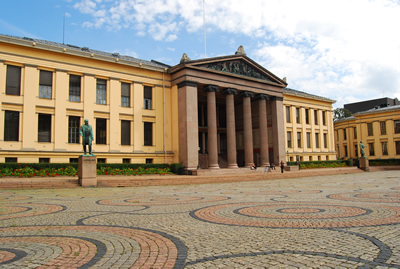Speech
How has inequality been reduced in Latin America in the past 10 years? How can we ensure a continued reduction? Is it possible to learn from the experiences of northern Europe? Researchers from ECLAC and the University of Oslo recently began long-term cooperation on economic and social matters to study advances in reducing inequality in Latin America over the past decade.
It is vital to reduce inequalities in society, not only in order to achieve sustainable decreases in poverty rates, but also to mitigate conflict among different groups and promote greater consensus around national political projects.
Regions as different as Latin America and northern Europe have their own valuable experiences in developing inclusive societies involved in the shared global economic context. We believe that the interregional exchange of experiences is important for understanding how countries can advance even further down this path. The idea is not to imitate and transfer experiences mechanically from one country to another, but rather to engage in mutual learning that will lend clarity to the effects of various measures and mechanisms aimed at achieving more inclusive growth.
One example from northern Europe is the successful experience of Norwegian economic development with few and small differences between classes and gender. This was the result of complementary social, labour and economic policies. This historic experience shows how minimum wage differences, extremely high productivity and steady economic growth are not only mutually compatible but also complementary. In Norway, there have been three key experiences.
The first experience was that wage equality boosted productivity. Norway now has one of the narrowest wage gaps in the world. Wages are practically the same in high- and low-productivity sectors. An important mechanism for achieving wage equality is setting wages in an organized way through collective bargaining by sector. As a result, the more unskilled jobs are relatively well paid, while highly skilled jobs have relatively low wages (compared to other countries). This kind of wage compression acts as a permanent "subsidy" to sectors that depend on highly skilled professionals. Wage compression is an incentive for greater efficiency and productivity: surpluses and investments increase in high-productivity enterprises, while they tend to shrink in low-productivity enterprises. As a result, the last century saw a transition towards a more productive economy that has also consolidated economic growth.
The second experience relates to the positive link between female participation in formal employment, economic growth and a general reduction in inequality. Female participation creates more demand for public services (such as kindergartens), while also generating taxes that enable the State to fund the development of these and other services. The services provided by public institutions in turn have a positive impact on levelling social differences - such that the income and social status of parents do not define the future situation of their children. Female labour participation has thus been a determining factor in economic growth and equality.
The third experience is that minimum wage gaps encourage support from all social sectors for a welfare state with high-quality public services and social policies. The Norwegian model has a mixture of specific and universal benefits, with an emphasis on universal benefits that enjoy wide political support. These systems contribute to income redistribution, while social security and collective goods strengthen the "weaker" groups in the labour market (thus contributing to the above-mentioned compression of wage differences).
The Norwegian social model is the result of trial and error, and this makes it more resilient and stable in the face of various pressures. It is not the result of a desktop design but rather a series of small steps that have depended largely on support from the electorate and the main unions. In this context, it should be borne in mind that northern Europe has well-organized employees and employers, with the latter being crucial in creating and sustaining the system.
Collective bargaining was probably the most important aspect in forming the basis for distribution, growth and social security. This type of system requires much of the population to have formal employment, which is not the case in Latin America. Many Latin American countries are in the process of forming their own new policies for ensuring a steady levelling of income (some with ECLAC support). As a result, it is not necessarily the institutional solutions that should be used as inspiration, but rather the idea that policies in one area can have a major impact in other spheres. Nor can the Nordic model be considered an end in itself, but rather should be seen as a development strategy with several possible solutions depending on local conditions and background.
Lastly, it may be encouraging to consider that Norway began its journey towards development and growth long before oil was discovered and exploited. Real per capita income was the same as El Salvador today and less than half the level of Chile. It was also a conservative country in many ways. Current attitudes to equality between those of a different gender or between rich and poor are not innate in Nordic culture, but rather emerged during a relatively short time thanks to legislative and social changes. Women's rights, for instance, are not a prerequisite for the model but one of its results. Attitudes have gradually changed as people see that reforms successfully reduced inequality and boosted individual freedom, economic growth and security.
This is why comparing continents can be very useful. Both parties can learn from each other in a globalized economy to discover best practices in the hope of turning around growing worldwide inequality, boosting growth and increasing security in a context of open economies.
*In June 2013, ECLAC and Norway concluded a cooperation agreement to exchange experiences and lessons learned in the building of social covenants for equality. This occurred as part of a visit to Oslo by the Executive Secretary of this United Nations regional commission, Alicia Bárcena. The authors of the article are both researchers from the University of Oslo, which is the main counterpart for ECLAC cooperation.


